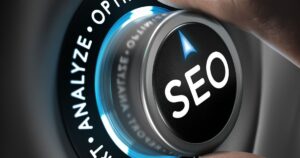 “Page speed” – also known as “page load time” and “time to first byte” – is the amount of time it takes your page to load. This is not to be confused with “site speed,” which is the page speed for a sample of page views on a site. The bottom line is that a faster page speed is always better. That’s because faster pages rank and convert better. Much of it translates to user experience.
“Page speed” – also known as “page load time” and “time to first byte” – is the amount of time it takes your page to load. This is not to be confused with “site speed,” which is the page speed for a sample of page views on a site. The bottom line is that a faster page speed is always better. That’s because faster pages rank and convert better. Much of it translates to user experience.
Although we have no definitive proof – because of the complexity of Google’s algorithm – we know that lower page load times cause sites to rank higher. In fact, in a recent study, sites ranking in the first five Google positions had noticeably lower page load times than sites that ranked at six and below. The site in position number six was 20 percent lower than the site in position one.
The best way to get rankings is to present a well-developed site that includes content that is useful to its users, and that is frequently updated. However, no one will see your content if the page does not load fast enough. But what is fast enough? Google expects pages to load in less than three seconds. Pages with longer load times tend to have higher bounce rates. Users spend less time on the page, which can negatively affect conversions.
Here are a few ways to Increase Page Speed:
- Reduce the size of CSS, HTML, and JavaScript files that are larger than 150 bytes. You can use a software application for file compression to do this. But do not use a file compressor on image files. It is best to use a program like PhotoShop, which allows you to retain control over image quality.
- Optimize your code by removing spaces, commas, and other unnecessary characters. You can also remove code comments, formatting, and unused code.
- Reduce your number of page redirects.
- Make sure your images are not larger than they should be.
- Make sure your images are in the right file format – PNGs are usually best for graphics with less than 16 colors; while JPEGs are usually better for photographs.
- Make sure your images are compressed for the web.
- Improve your server response time by identifying performance bottlenecks, such as slow database queries, slow routing, or a lack of adequate memory – and fix them.
- Use a Google tool to measure site speeds with analytics reports. This can help you to determine which of your landing pages are slowest, if your site loads faster on different browsers, and how page load time varies across geographies.
- Use a “content distribution network” (CDN) to distribute the load of delivering content. A CDN stores copies of your site at multiple, geographically diverse data centers so that users have faster, more reliable access to your site.
We Can Help Get Your Site Up to Speed!
A faster page speed is always better, and we can help you get there. We know that it can be complicated, and that your focus is directed at serving your clients’ needs. Our SEO specialists can help you to maximize the power of your website, and we will serve all of your digital marketing needs. As a boutique digital marketing firm, Premier Legal Marketing (PLM) offers the very best in personalized service. Call us today at 856-448-4736, or contact us online to learn more about PLM’s internet marketing services for lawyers.



